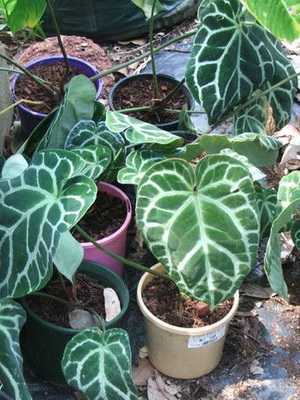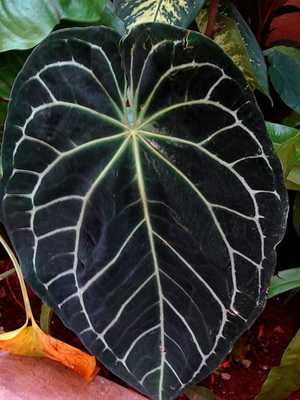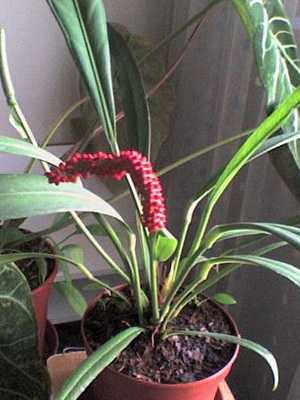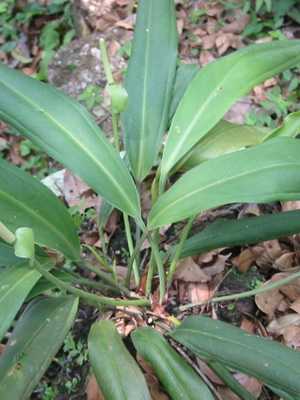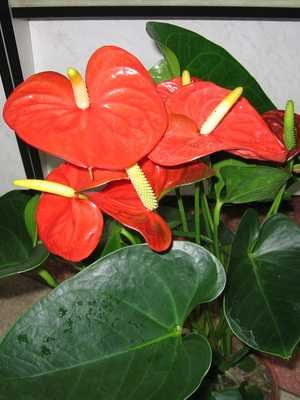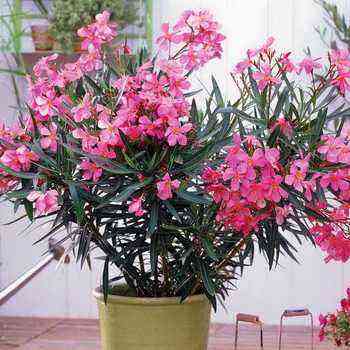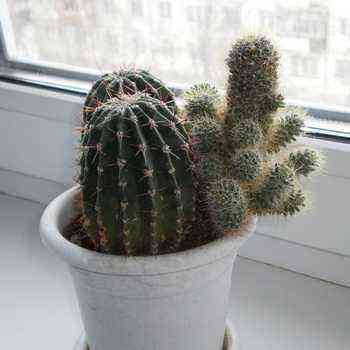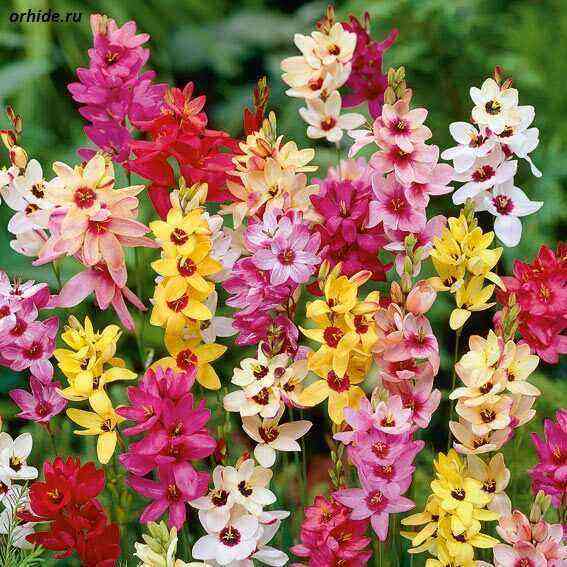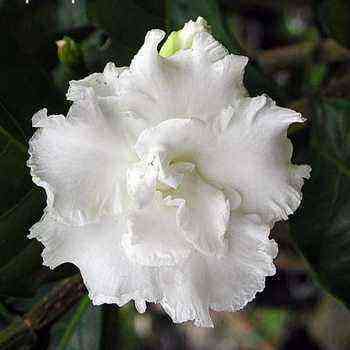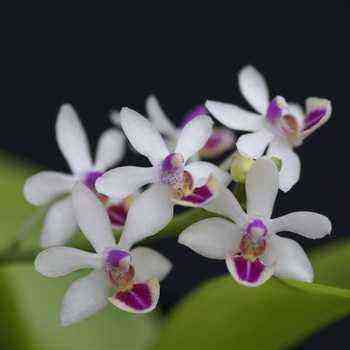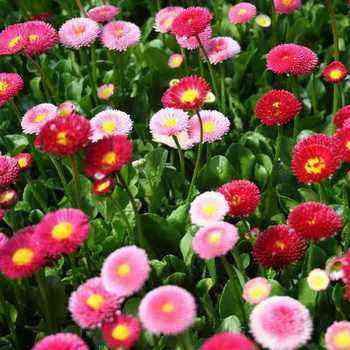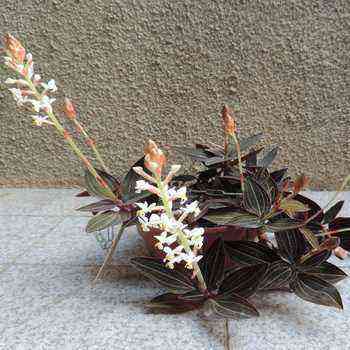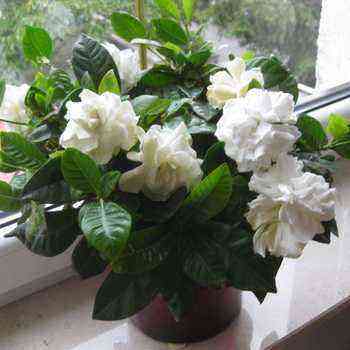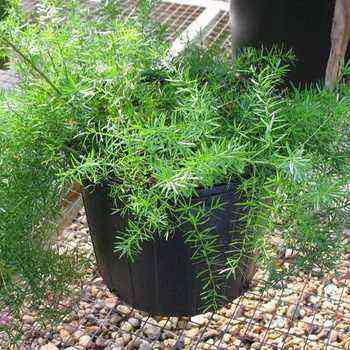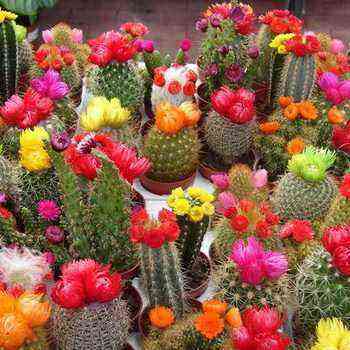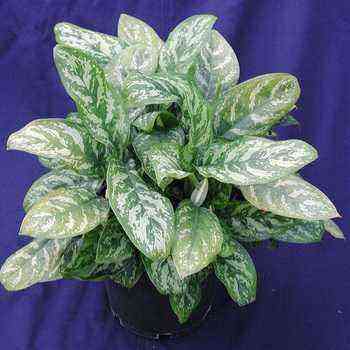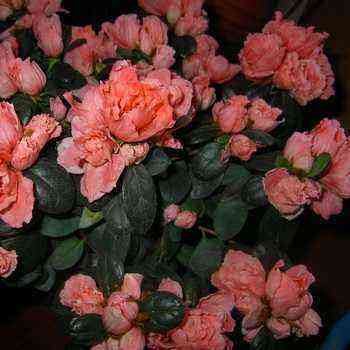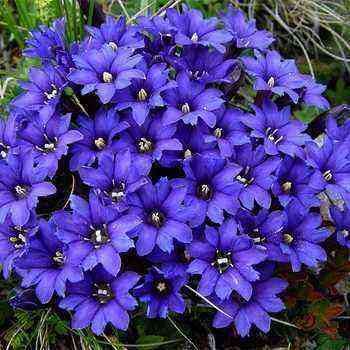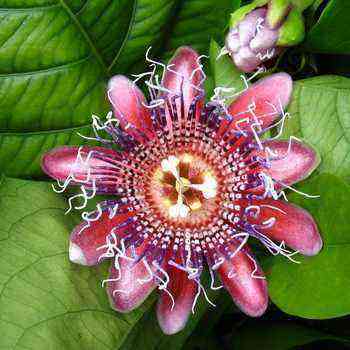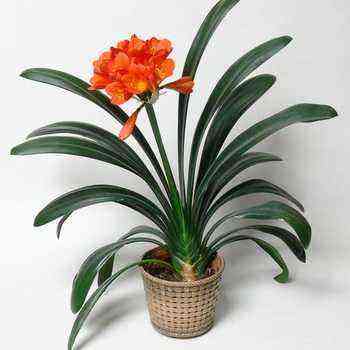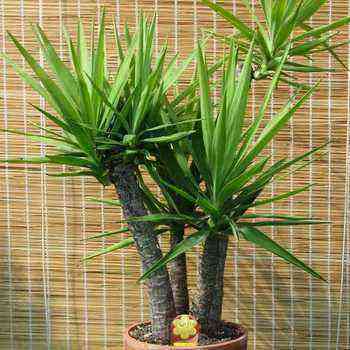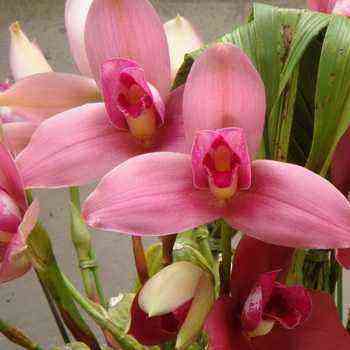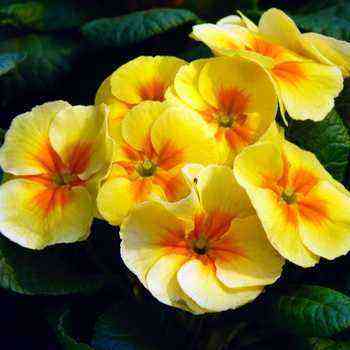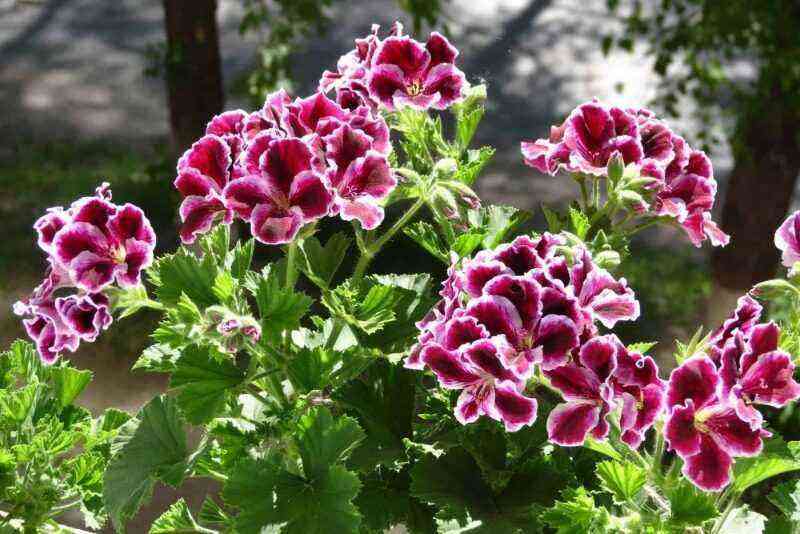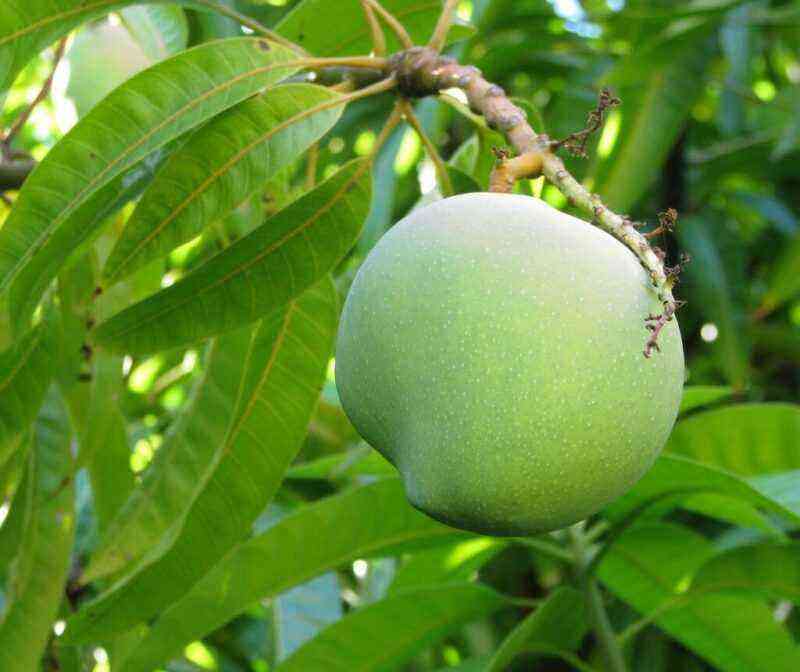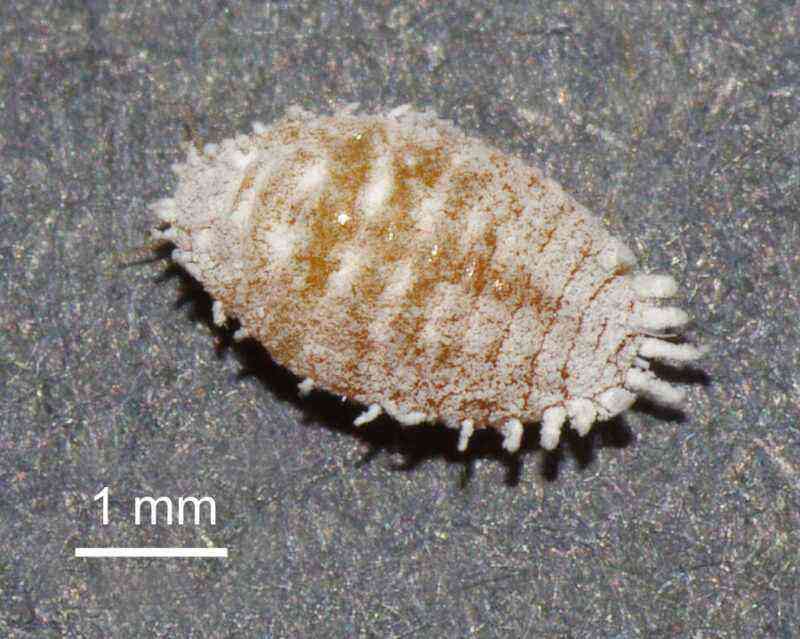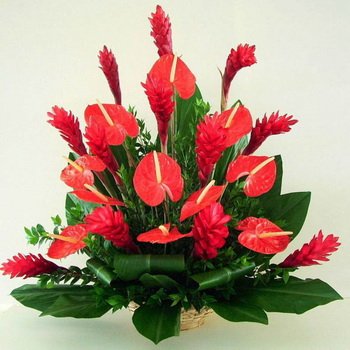
Check out the photos of the antarium species and their descriptions below, and choose the plant you like the most for breeding at home.
Family: Aroid, shade-tolerant, moisture-loving.
For its beauty and grace, this houseplant is often compared to a pink flamingo. A waxy elliptical blanket, bright red, pink, or white, envelopes a spirally twisted yellow or orange cob. All this splendor is located on a long (up to 50 cm) straight peduncle among rather large dark green leaves. Each flower lives for several weeks (it is well preserved in cut form), and the flowering period lasts from spring to late summer.
Types of antarium flower at home
This is how flowering species of anthurium look like Andre (Anthurium andreanum) и Scherzer (Anthurium scherzerianum).
У crystal anthurium (Anthurium crystallinum) in addition to an elegant flower, there are also very spectacular leaves – dark green velvety, decorated with silvery veins with a crystal shine.
There are also purely decorative leaf species, for example, anthurium baker (Anthurium bakeri) with belt-like dense leaves (20-55 cm long and 3-9 cm wide), covered with red-brown dots below.
The anthurium flower at home forms a beautiful spreading bush. To allow the leaves on long stalks to take the proper position, it is placed at some distance from other plants. Faded inflorescences a. Andre and A. Scherzer is cut immediately after flowering so that they do not set seeds and weaken the plant.
Growing an antarium flower at home
Anthuriums at home are demanding on light, heat and air humidity. For their placement, they choose a place that is well lit in winter and slightly shaded in summer.
The temperature is moderate, about +22 ° C, for flowering it will be useful to reduce it to +15 ° C in winter. Anthurium is watered abundantly in summer, moderately in winter. These plants do not like overdrying and moisture stagnation. Their roots react very painfully to the limescale formed on the walls of the pot, therefore, for planting, they choose containers of a classic shape made of plastic or glazed ceramics, filling 1/4 of their volume with drainage material.
Antarium care at home involves regular watering with well-settled or artificially softened water. It is also necessary to spray carefully, it is better to use special air humidifiers, since droplet moisture, when it gets on the leaves, can spoil their decorative effect. The plant is fed from March to September once every two weeks. Anthurium should be transplanted every two years. You can use a mixture of leaf soil and peat (1: 1).
Anthurium forms a beautiful spreading bush with flowing lines of leaves and flowers. Large flowering specimens look especially impressive as a tapeworm.
Useful properties of the antarium flower
In addition to a positive aesthetic effect, anthurium increases the humidity of the air, saturating it with purified water vapor. Another useful property of antarium is the assimilation and processing of harmful substances such as xylene and toluene into harmless compounds.


